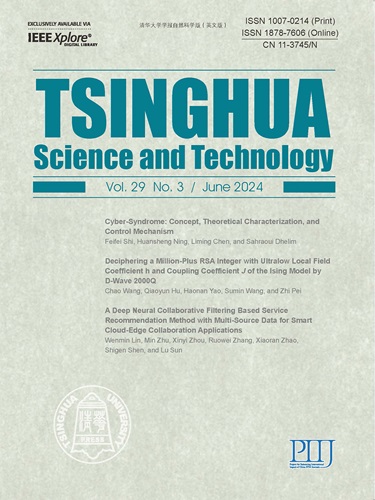Heterogeneous Spatio-Temporal Graph Contrastive Learning for Point-of-Interest Recommendation
IF 6.6
1区 计算机科学
Q1 Multidisciplinary
引用次数: 0
Abstract
As one of the most crucial topics in the recommendation system field, point-of-interest (POI) recommendation aims to recommending potential interesting POIs to users. Recently, graph neural networks (GNNs) have been successfully used to model interaction and spatio-temporal information in POI recommendations, but the data sparsity of POI recommendations affects the training of GNNs. Although some existing GNN-based POI recommendation approaches try to use social relationships or user attributes to alleviate the data sparsity problem, such auxiliary information is not always available for privacy reasons. Self-supervised learning gives a new idea to alleviate the data sparsity problem, but most existing self-supervised recommendation methods cannot be directly used in the spatio-temporal graph of POI recommendations. In this paper, we propose a novel heterogeneous spatio-temporal graph contrastive learning method, HestGCL, to compensate for existing GNN-based methods' shortcomings. To model spatio-temporal information, we generate spatio-temporally specific views and design view-specific heterogeneous graph neural networks to model spatial and temporal information, respectively. To alleviate data sparsity, we propose a cross-view contrastive strategy to capture differences and correlations among views, providing more supervision signals and boosting the overall performance collaboratively. Extensive experiments on three benchmark datasets demonstrate the effectiveness of HestGCL, which significantly outperforms existing methods.用于兴趣点推荐的异构时空图对比学习
作为推荐系统领域最重要的课题之一,兴趣点(POI)推荐旨在向用户推荐潜在的感兴趣的兴趣点。最近,图神经网络(GNN)被成功地用于对兴趣点推荐中的交互和时空信息进行建模,但兴趣点推荐的数据稀疏性影响了 GNN 的训练。虽然现有的一些基于 GNN 的 POI 推荐方法试图利用社会关系或用户属性来缓解数据稀疏问题,但出于隐私原因,这些辅助信息并不总是可用的。自监督学习为缓解数据稀疏问题提供了一种新思路,但现有的大多数自监督推荐方法无法直接用于 POI 推荐的时空图。本文提出了一种新型异构时空图对比学习方法 HestGCL,以弥补现有基于 GNN 方法的不足。为了对时空信息建模,我们生成了特定时空的视图,并设计了特定视图的异构图神经网络,分别对空间信息和时间信息建模。为了缓解数据稀缺问题,我们提出了跨视图对比策略,以捕捉视图之间的差异和相关性,从而提供更多的监督信号,协同提升整体性能。在三个基准数据集上的广泛实验证明了 HestGCL 的有效性,其性能明显优于现有方法。
本文章由计算机程序翻译,如有差异,请以英文原文为准。
求助全文
约1分钟内获得全文
求助全文
来源期刊

Tsinghua Science and Technology
COMPUTER SCIENCE, INFORMATION SYSTEMSCOMPU-COMPUTER SCIENCE, SOFTWARE ENGINEERING
CiteScore
10.20
自引率
10.60%
发文量
2340
期刊介绍:
Tsinghua Science and Technology (Tsinghua Sci Technol) started publication in 1996. It is an international academic journal sponsored by Tsinghua University and is published bimonthly. This journal aims at presenting the up-to-date scientific achievements in computer science, electronic engineering, and other IT fields. Contributions all over the world are welcome.
 求助内容:
求助内容: 应助结果提醒方式:
应助结果提醒方式:


